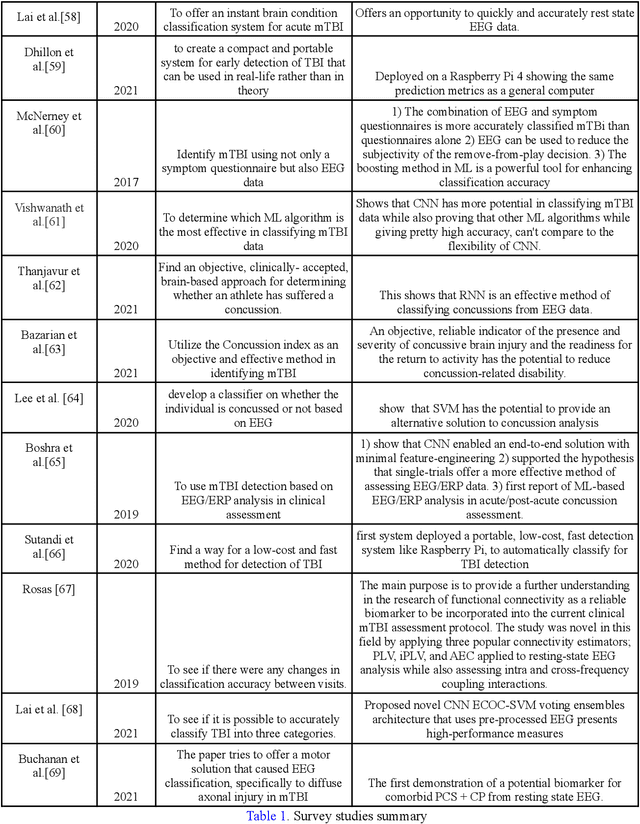EEG Machine Learning for Analysis of Mild Traumatic Brain Injury: A survey
Paper and Code
Aug 10, 2022



Mild Traumatic Brain Injury (mTBI) is a common brain injury and affects a diverse group of people: soldiers, constructors, athletes, drivers, children, elders, and nearly everyone. Thus, having a well-established, fast, cheap, and accurate classification method is crucial for the well-being of people around the globe. Luckily, using Machine Learning (ML) on electroencephalography (EEG) data shows promising results. This survey analyzed the most cutting-edge articles from 2017 to the present. The articles were searched from the Google Scholar database and went through an elimination process based on our criteria. We reviewed, summarized, and compared the fourteen most cutting-edge machine learning research papers for predicting and classifying mTBI in terms of 1) EEG data types, 2) data preprocessing methods, 3) machine learning feature representations, 4) feature extraction methods, and 5) machine learning classifiers and predictions. The most common EEG data type was human resting-state EEG, with most studies using filters to clean the data. The power spectral, especially alpha and theta power, was the most prevalent feature. The other non-power spectral features, such as entropy, also show their great potential. The Fourier transform is the most common feature extraction method while using neural networks as automatic feature extraction generally returns a high accuracy result. Lastly, Support Vector Machine (SVM) was our survey's most common ML classifier due to its lower computational complexity and solid mathematical theoretical basis. The purpose of this study was to collect and explore a sparsely populated sector of ML, and we hope that our survey has shined some light on the inherent trends, advantages, disadvantages, and preferences of the current state of machine learning-based EEG analysis for mTBI.
 Add to Chrome
Add to Chrome Add to Firefox
Add to Firefox Add to Edge
Add to Edge